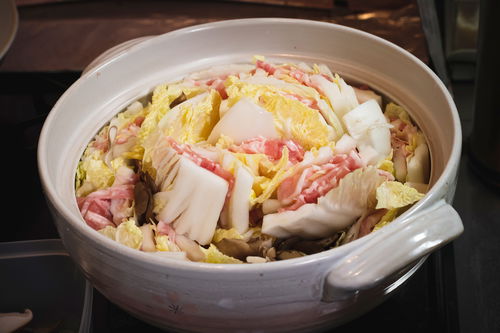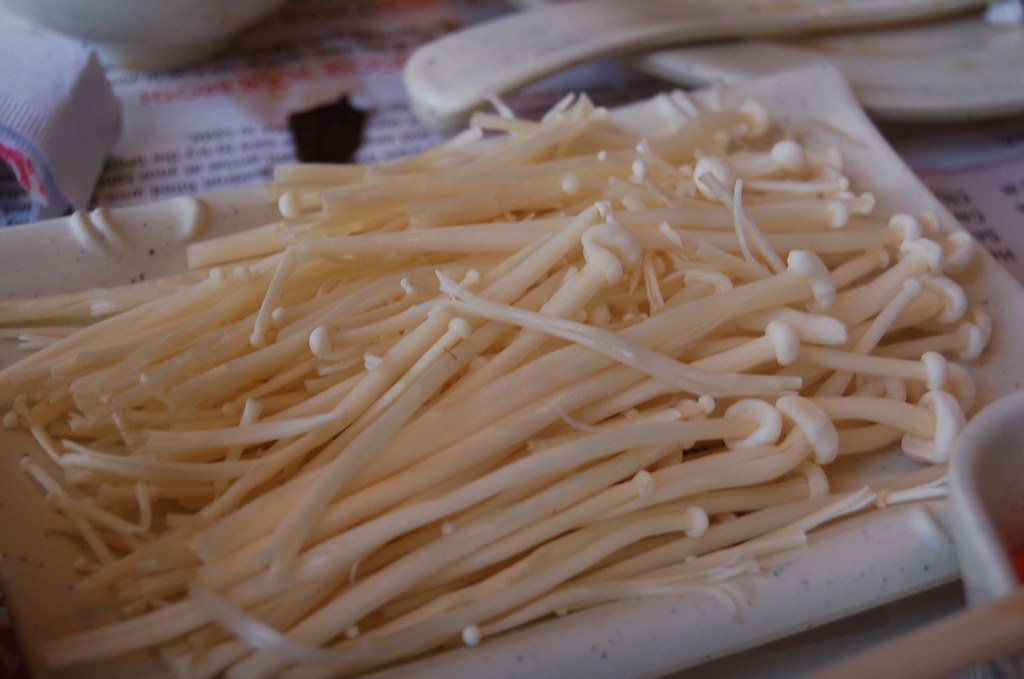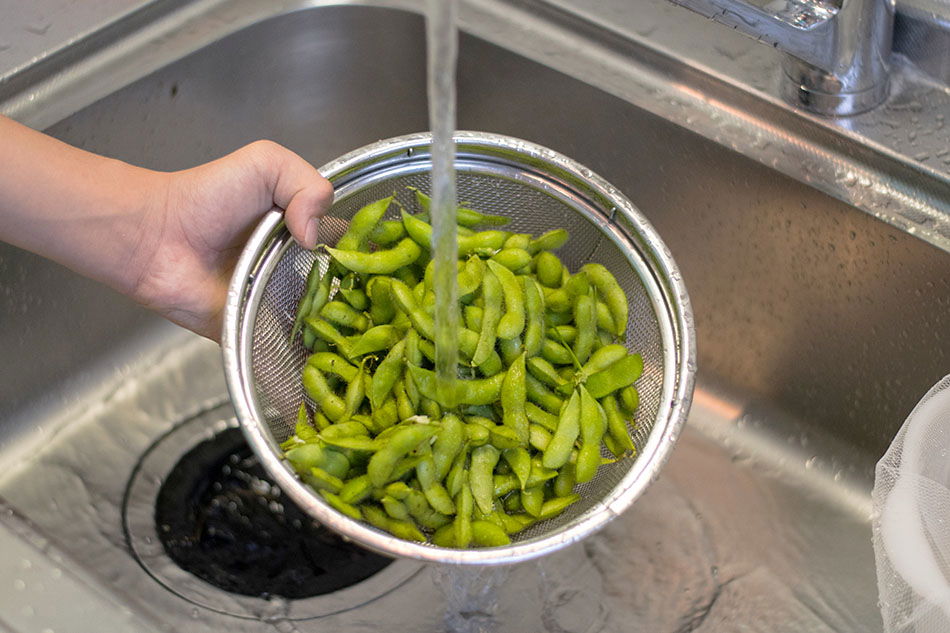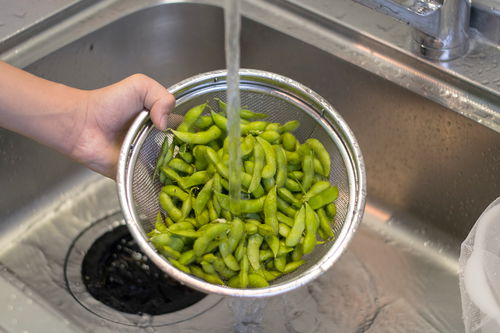Table of contents:
Japan has a healthy and balanced eating culture. The combination of proteins, carbohydrates and good fats, as well as fresh ingredients, provides a balanced diet. Of course, vegetables cannot be missing. They are served in various forms at regular meal times. Whether at your own dining table or in a restaurant, vegetables belong to every meal, whether raw, steamed or even baked in tempura batter. Japanese cuisine is heavily influenced by Buddhist dishes ("Shojin Ryori"), as eating meat was forbidden for a long time in old Japan. It is therefore only natural that vegetables belong to every dish.
Local Seasonal Vegetables
"Shun" refers to the use of seasonal vegetables. Cultivation is adapted to the respective season and the different climate zones, which means that the country is supplied with different vegetables all year round. Immediate processing after harvest ensures a more intense flavor and freshness.
But which vegetables are eaten when? In spring there are leafy greens for soups and stir-fries. In summer, eggplant, cucumbers, okra, and edamame are harvested. Autumn offers sweet potatoes, pumpkin and various mushrooms, and in winter there is garlic, carrots and daikon (winter radish), among others.
Many vegetable varieties originally came from outside. In addition to varieties from mainland Asia, European vegetables can also be found in Japanese cuisine. However, you will be surprised by their appearance, as they are considerably smaller or larger in Japan. Daikon is especially worth mentioning. The winter radish is the most widely grown and comes in over one hundred different varieties. These range from the 20-kilogram Sakuraijma radish to varieties the size of a carrot.
The Quality of the Vegetables
As in other areas, quality plays a major role in vegetables. Not only is attention paid to the taste, but also to the appearance. Thanks to good logistics, freshly harvested produce reaches supermarkets in a fresh state. The high standards for vegetables can also be seen in the prices. This is hardly comparable to what is paid on average in Germany.
Little Room for Growing
The many mountains in Japan offer little room for growing areas. You can only find them on 13% of the land area, and on average only one hectare is available. This area is barely enough to grow enough vegetables for the whole country. Japan is therefore the second largest vegetable importer, right after the USA. Nevertheless, every area is used for cultivation, especially in Hokkaido, the northernmost island of Japan. Unlike other Asian countries, the technology is state-of-the-art. This refers not only to the equipment, but also to fertilizers and hybrid seedlings.
Japanese Vegetable Variety
Hakusai
The "Chinese cabbage" is one of the more robust vegetable varieties. It easily withstands the winter cold and is one of the most commonly eaten vegetables in Japan, along with onions and daikon. Hakusai is popular in stews and hot pots (e.g. Mille Feuille Nabe ). In Korea it is known as Kimchi and in Japan it is pickled as Tsukemono .

Mitsuba
To know what this herb tastes like, you have to try it. You will often find its unique taste in soups. It is used as a spice and used fresh. Mitsuba can also be found fried as Tempura or in sushi.
Enoki
The mushroom is versatile. Either raw and crunchy in salads, cooked in soups and hot pots , or fried.

Edamame

The healthy snack is almost everywhere and always available. The green soybeans are available at different times of year depending on the growing area. While it is September in the north, you get Edamame in the south as early as June. The immature bean is high in protein and, with its sweet and nutty flavor, goes well with beer, salads and noodles as a snack accompaniment.

Daikon
The aforementioned Daikon is the most popular vegetable in Japan. It can be prepared in many ways. The mild flavor of the winter radish makes it easy to combine with other ingredients. Depending on the preparation method, Daikon is soft or crunchy. It is suitable for salads, but can also be roasted, fried, steamed or even fried as patties, which is called Daikon mochi .
Renkon
If you cut open the root of the lotus plant, you will discover a beautiful hole pattern. Renkon is not only an interesting sight, but is also used in a variety of ways. This traditional New Year's dish can be fried in tempura batter , cooked in Dashi , or used raw in salads or for stir-fries. The root has long served as a symbol of Buddhism.
Satsumaimo
Satsumaimo is a yellow sweet potato variety. It is very sweet and can be prepared in different ways, so it can be found in many dishes like desserts , soups or even eaten plain as a snack. Yes, you heard right, you can eat them plain. In Japan, the sweet potato is available as “Yaki”, in which the potato is roasted whole on hot coals and sometimes also sold by street vendors. But of course you can also buy it in the supermarket. It is so delicious and has such a special aroma that you can usually smell it from afar.
Takenoko
You've surely come across this vegetable somewhere. These young bamboo shoots are often added to Asian dishes in German restaurants. Freshly harvested, they are sold in Japan in spring and add a delicate spiciness to any soup. In Germany you will probably find them in a pre-cooked and vacuum-packed version.
Kabocha
Kabocha is a Japanese type of pumpkin that tastes slightly sweeter than the German version. It is particularly noticeable for its bright orange-yellow flesh, which is bordered by a dark green, strong shell. This is so thick that peeling it is no fun at all, but luckily the shell can be eaten. In Japanese supermarkets you can also get it fried, which makes it really delicious. Kabocha is also popular in other dishes such as desserts, snacks or soups.
Hokkaido Pumpkin
This type of pumpkin is probably the best known in Germany, as it is sold in almost every supermarket, especially during the winter months. The Hokkaido pumpkin is named after the Japanese island of Hokkaido, where it has been grown since time immemorial. You can recognize it by its typical pumpkin-orange color, which is due to the concentration of carotene. Due to its many vitamins, calcium and potassium, it is not only healthy, it can also be stored for up to 2 months after purchase if stored correctly.

Kabu
Although Kabu is a turnip, the Japanese variety is quite spicy and much spicier than the German version. Because it was already present in the Japanese cuisine before the 10th century, it is an integral part of some typical dishes like soups or hot pots (Nabe) . You can also find it pickled or marinated. Although it is very similar in taste to Daikon , it differs in its high nutrient content. Kabu has a lot of vitamin C, iron, vitamin A and calcium.
Negi
You have surely come across this vegetable before. The Japanese spring onion is often chopped finely and sprinkled on soups or other dishes to add a special kick. In any case, it is used everywhere for flavor. While in German households the onion is mainly used as a home remedy in winter, in Japan it is the spring onion that fulfills this role.
Matsutake
Matsutake mushrooms are very spicy and aromatic in flavor, which is why they are best not eaten with other mushrooms. In general, the taste and texture of Matsutake mushrooms is a bit of an acquired taste, but it goes very well with rice, miso soup or even ramen . Since it cannot be cultivated, you always have to wait for autumn to enjoy it. As a gourmet mushroom, it costs a little more.
Maitake
As the “king of mushrooms”, Maitake is not only incredibly delicious when roasted, but it is also very healthy. In Japan, it is even considered a home remedy for diabetes and is said to strengthen the immune system.
Shiitake
While Maitake is called the "king of mushrooms", the Shiitake is the “king of medicinal mushrooms”, as it is said to have special healing powers. For over a thousand years, Shiitake mushrooms have been used in Japanese cuisine in fish and vegetable dishes, making it one of the most popular mushrooms in Japan. Also in hot pots (Nabe) and in the form of tempura Shiitake is popular. In Germany you will often only get this mushroom dried.
Vegetable Varieties Also Found in Germany
Although Japan can boast so many exotic vegetable varieties, it also enjoys cooking with vegetables that are common in Germany. However, many of the following vegetables look a bit different from their European counterparts. They can also differ in texture and taste.
Ninjin - Carrot
Carrots are often used for Japanese dishes and taste hardly any different from the German variety, even though the Japanese carrot is a bit larger and thicker.
Nasu - Eggplant
Japan has many different varieties of eggplant, which differ in shape and color. The most popular variety is much smaller and thinner than the German version and has a deep purple color. For many Japanese dishes eggplant is pickled, pan-fried or grilled. Also in miso soup it tastes very good. Popular dishes include Nasu Dengaku and Nasu Miso Itame.
Kyuri - Cucumber
Cucumbers in Germany are often watery, but not the Japanese version. It is slightly smaller, but crunchier and more intense in flavor. You can bite right into it without a guilty conscience, as it is usually left unpeeled in Japan. It is mainly eaten raw in salads, as a garnish or pickled ( Tsukemono ).
Retasu - Lettuce
There is hardly any difference between German and Japanese lettuce, they are processed and served in the same way. Only the price is different, as a head of lettuce can cost up to 5 euros in Japanese supermarkets!
Toumorokoshi - Corn
Corn is used in many Western dishes in Japan such as bread, pizza, pasta and salads. In corn season, you can buy whole cobs. These are often grilled and eaten with soy sauce. The main growing area is Hokkaido.
Jagaimo - Potatoes
Potatoes have only recently been a part of Japanese cuisine. Grown in Hokkaido, they are mainly found in Western dishes.
Tomato - Tomato
Tomatoes are also mainly used in Western dishes in Japan, but of course you can also find them raw in salads and as a garnish. They are only rarely cooked in Japanese dishes.
Tamanegi - Onion
Japan is at the forefront when it comes to onions. The country is one of the world's leading producers! It is therefore only natural that Japanese people love to eat onions and therefore use them in almost all dishes.
Shouga - Ginger
Originally from China, ginger root is now a very important ingredient in Japanese cuisine. You will surely know ginger as a pickled or grated version with sushi. It is especially popular in winter.
Serori - Celery
Throughout Japan, Shizuoka Prefecture is known as a celery producer and the vegetable enjoys a special reputation throughout Japan. As with us, celery is considered extremely healthy and is often eaten to prevent illness.
Ninniku - Garlic
You can also find garlic in Japanese cuisine. In addition to the German version, there is also a black variant: Kuro Ninniku. It is a widespread version of garlic in East Asia and is also said to be very healthy.
Kyabetsu - Cabbage
Because salads are very expensive in Japan, they are often stretched with chopped cabbage. It is very popular and can be bought year-round. One peculiarity is that there is also a spring cabbage in Japan.


Comments
Danke für die tolle und übersichtliche Zusammenstellung
Hallo , Was macht man als Deutscher wenn man gegen Sellerie allergisch ist und nach Japan in den Urlaub fliegt ? Lg Andi